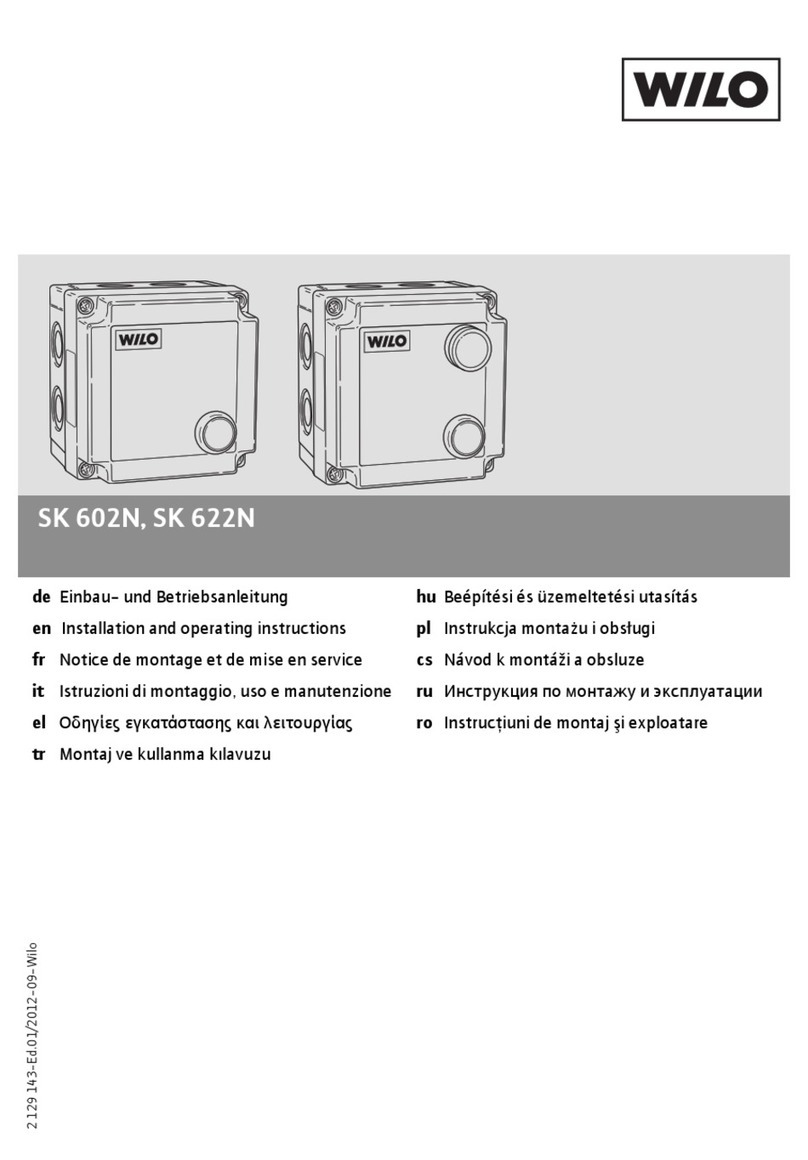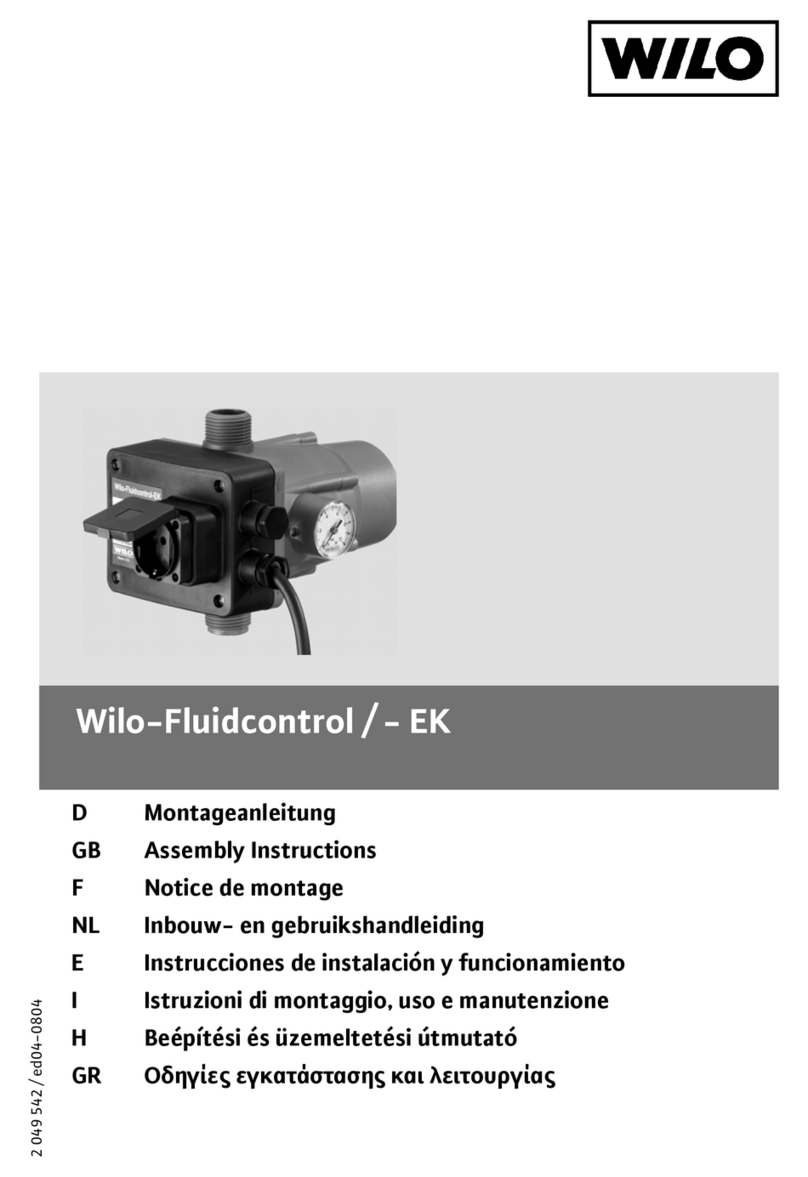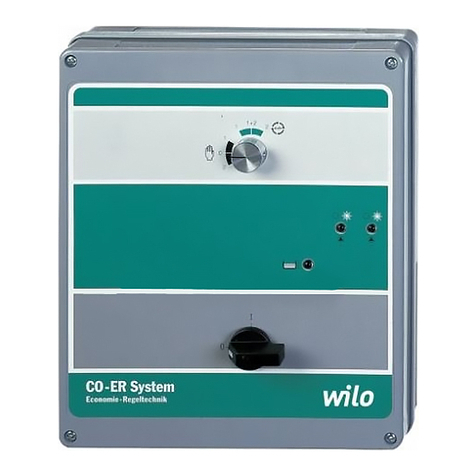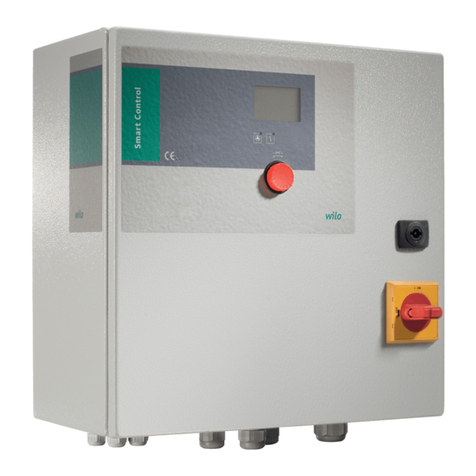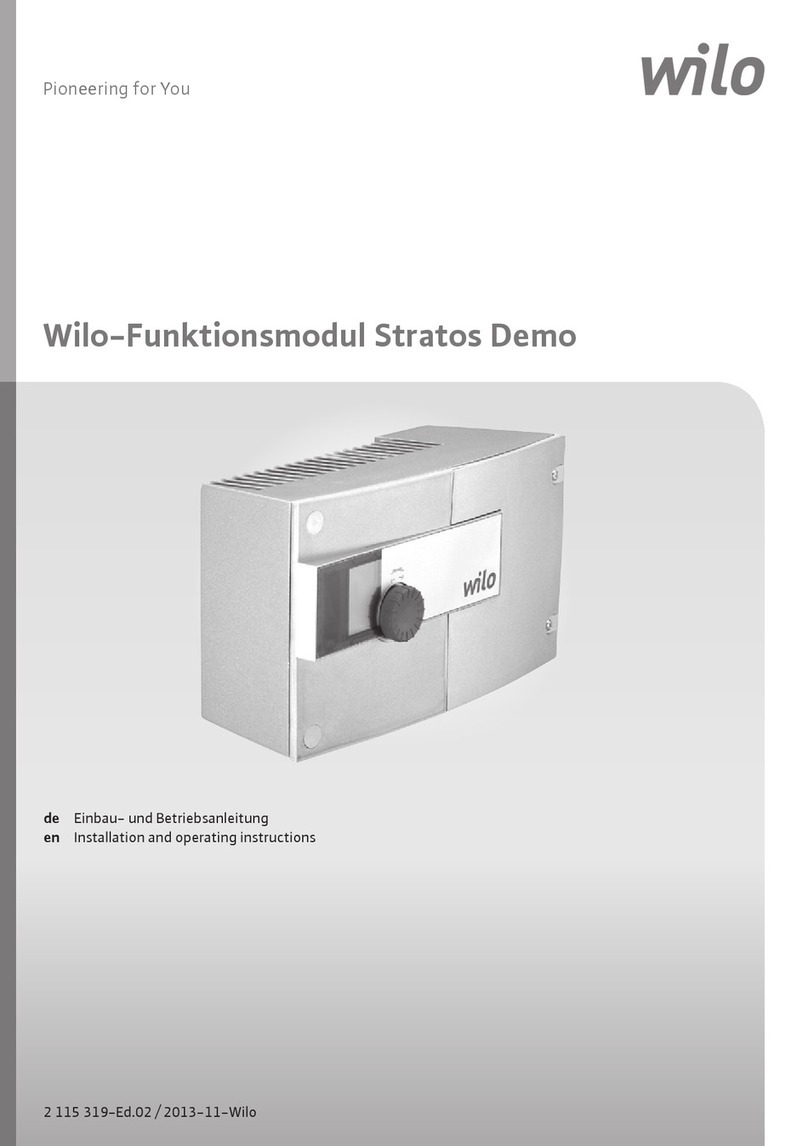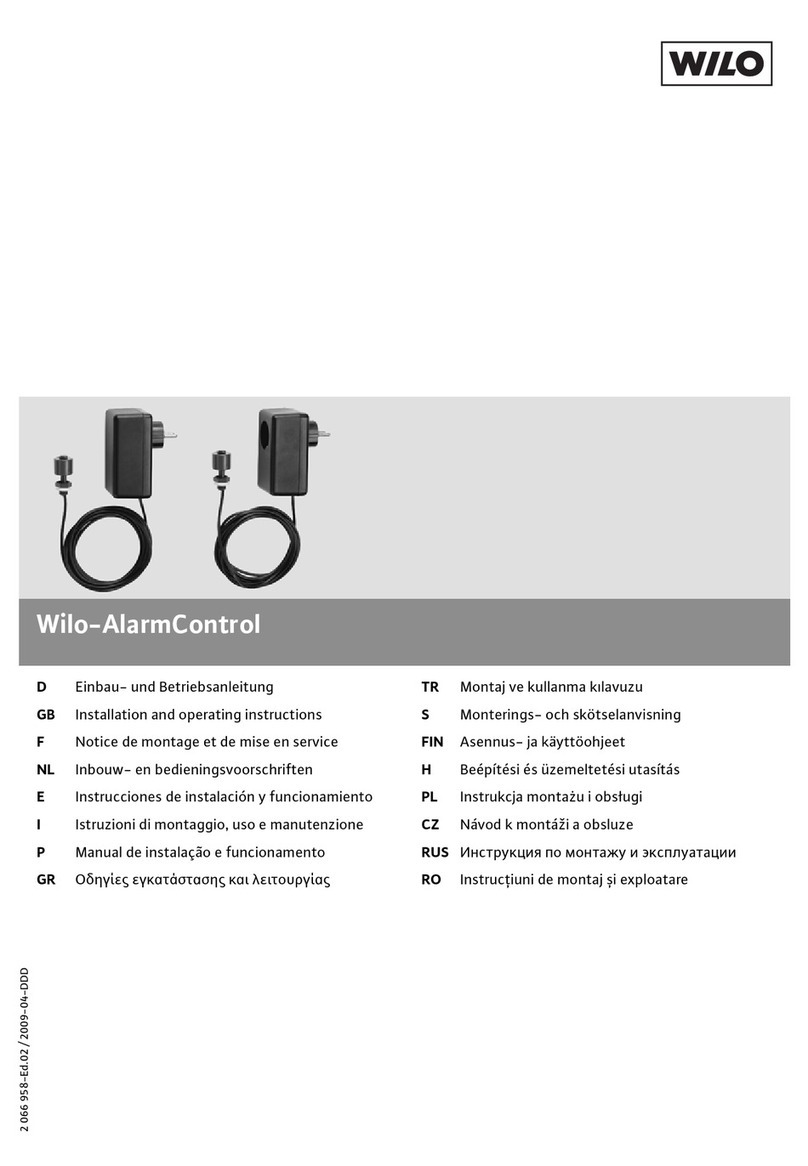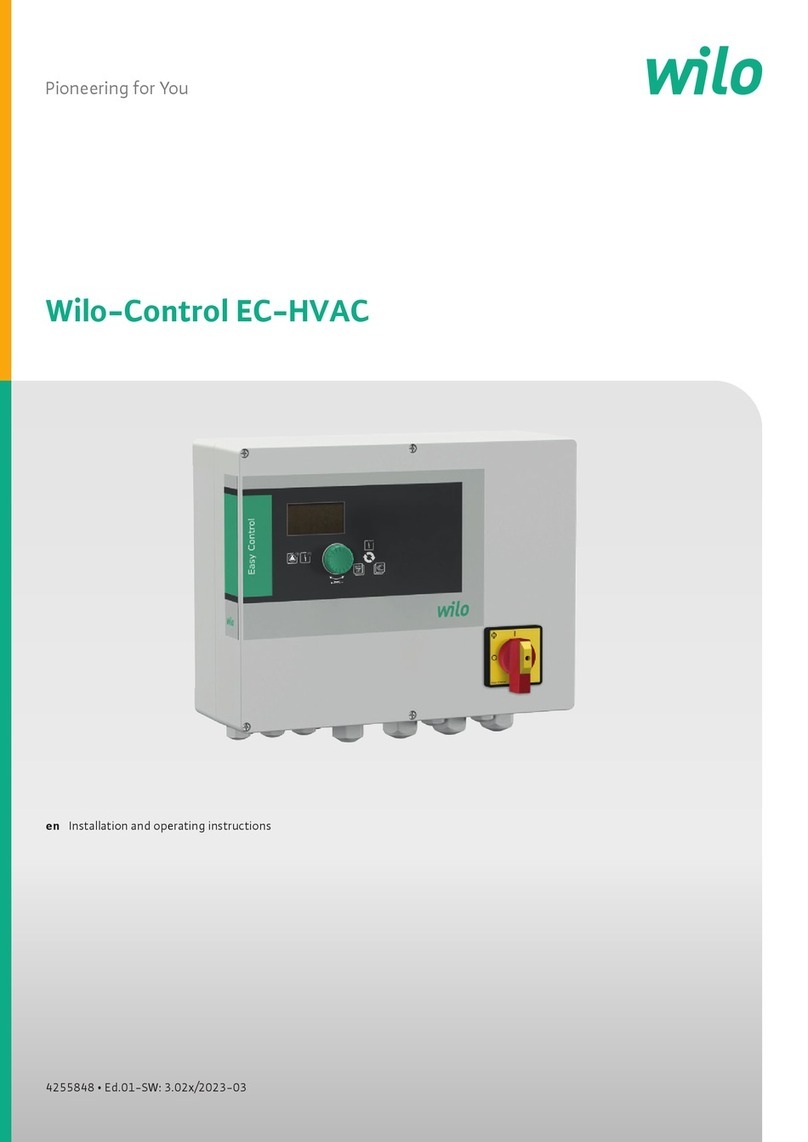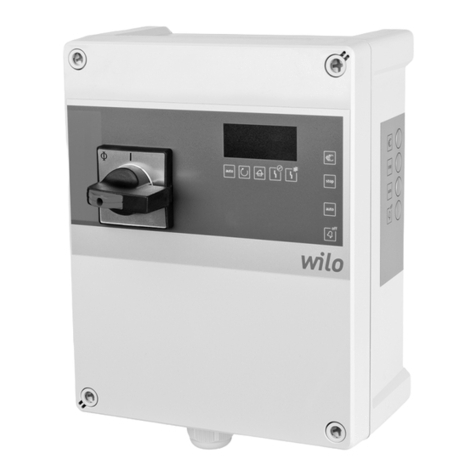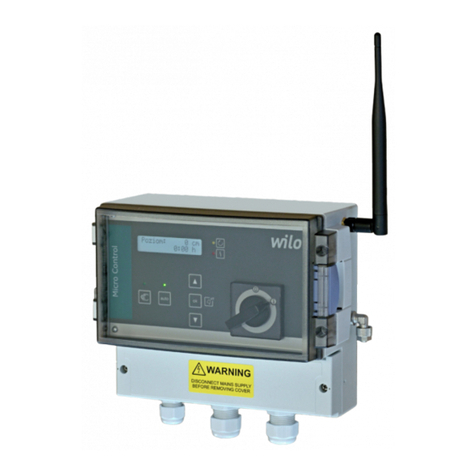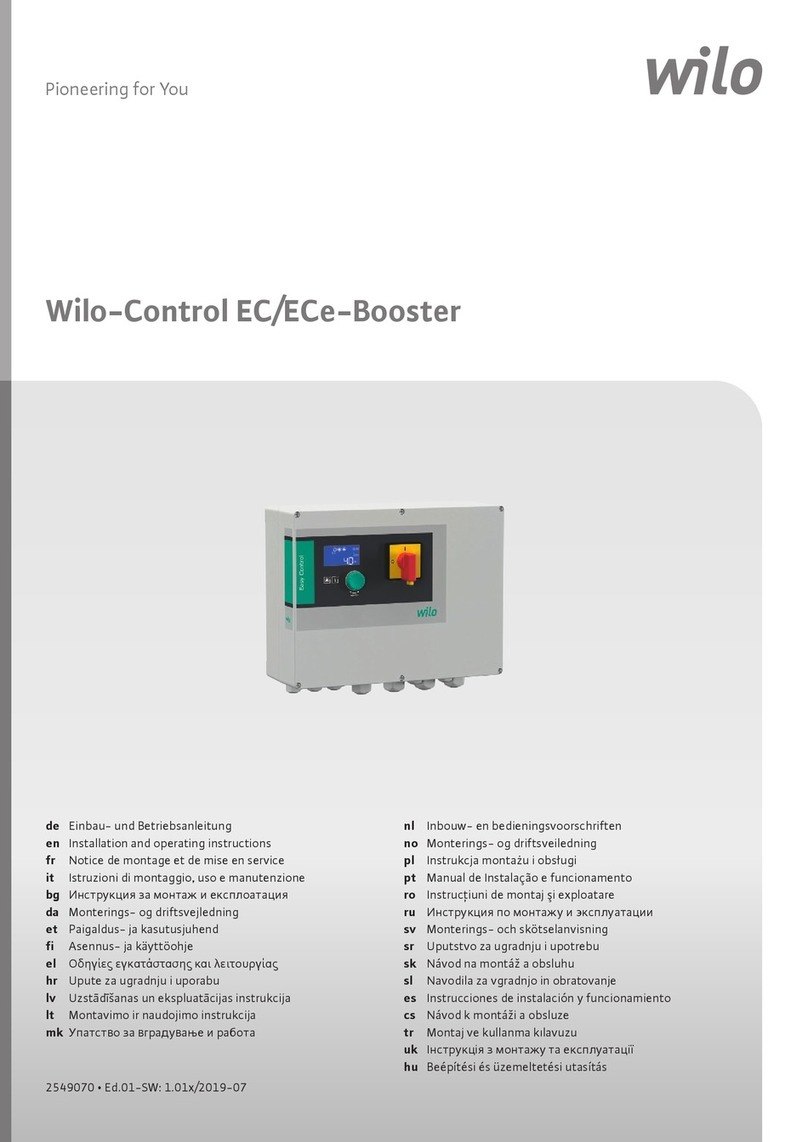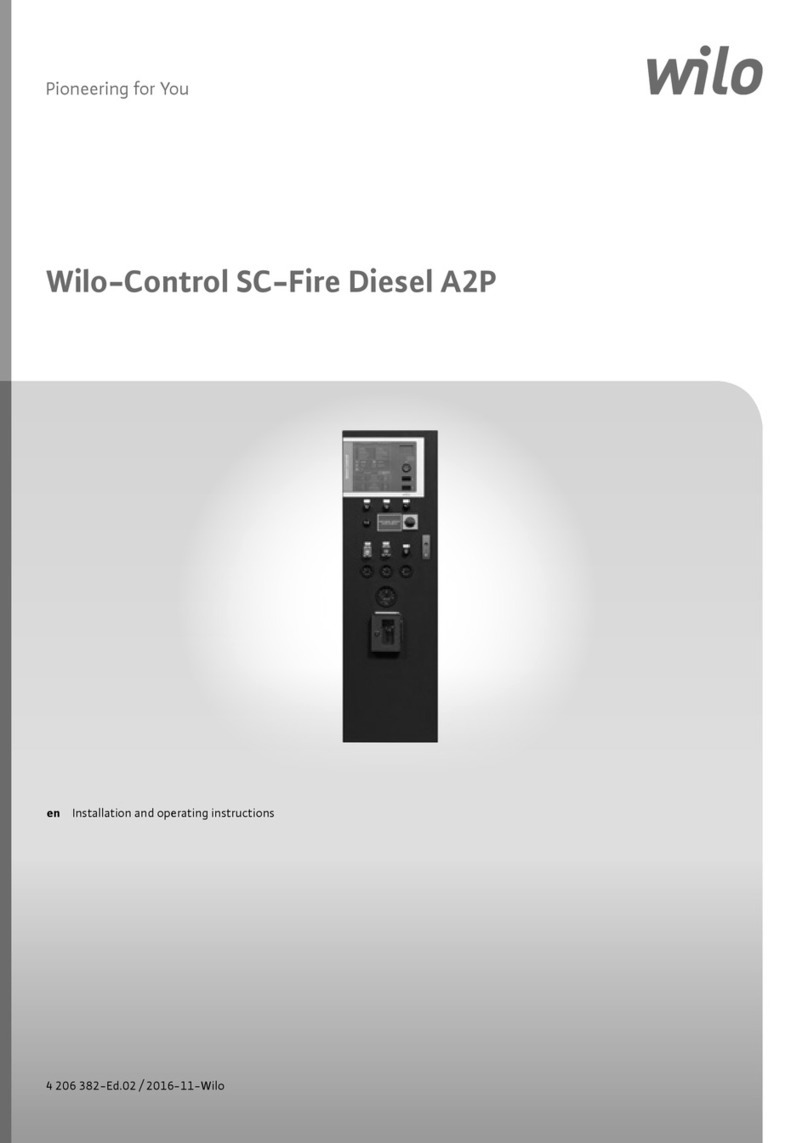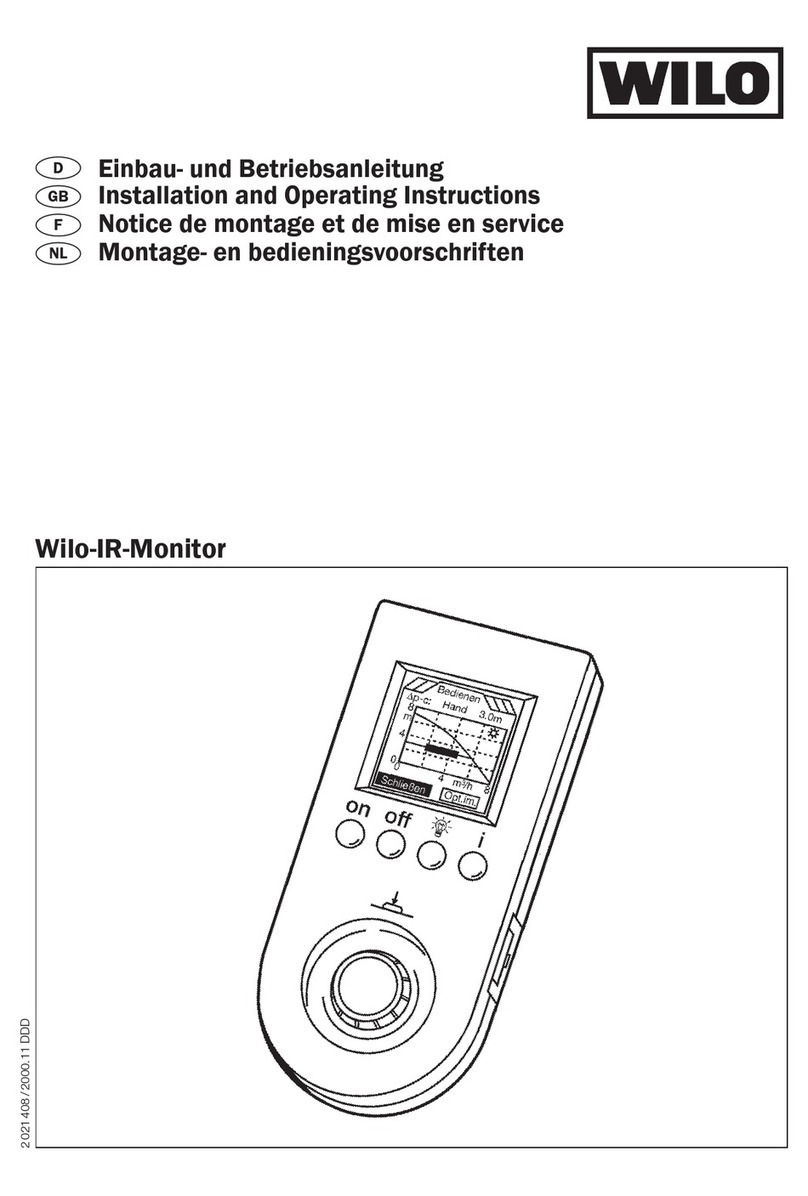
en
Installation and operating instructions • Wilo-Control MS-L • Ed.02/2022-05 9
Table of contents
1 General information .................................................................10
1.1 About these instructions ...................................................10
1.2 Digital instructions..............................................................10
1.3 Copyright .............................................................................10
1.4 Subject to change ...............................................................10
1.5 Exclusion from warranty and liability ...............................10
2 Safety.........................................................................................10
2.1 Identification of safety instructions.................................10
2.2 Personnel qualifications.....................................................11
2.3 Electrical work .....................................................................12
2.4 Monitoring devices .............................................................12
2.5 Installing/dismantling.........................................................12
2.6 During operation .................................................................12
2.7 Maintenance tasks..............................................................13
2.8 Operator responsibilities....................................................13
3 Application/use.........................................................................13
3.1 Intended use ........................................................................13
3.2 Improper use........................................................................13
4 Product description..................................................................13
4.1 Structure ..............................................................................13
4.2 How it works ........................................................................14
4.3 Technical data .....................................................................14
4.4 Inputs and outputs .............................................................15
4.5 Functions..............................................................................15
4.6 Type key ...............................................................................15
4.7 Operation on electronic start-up controllers .................16
4.8 Installation in potentially explosive atmospheres..........16
4.9 Scope of delivery.................................................................16
4.10 Accessories ..........................................................................16
5 Transportation and storage.....................................................16
5.1 Delivery.................................................................................16
5.2 Transport..............................................................................16
5.3 Storage .................................................................................16
6 Installation ................................................................................17
6.1 Personnel qualifications.....................................................17
6.2 Installation types.................................................................17
6.3 Operator responsibilities....................................................17
6.4 Installation ...........................................................................17
6.5 Electrical connection ..........................................................18
6.6 Functions..............................................................................25
7 Operation ..................................................................................26
7.1 Operating elements ............................................................26
7.2 How it works ........................................................................28
8 Commissioning .........................................................................28
8.1 Operator responsibilities....................................................28
8.2 Commissioning in explosive atmospheres ......................29
8.3 Connection of signal transmitters within potentially ex-
plosive atmospheres...........................................................29
8.4 Activating the device .........................................................29
8.5 Installing the rechargeable battery ..................................30
8.6 Check the direction of rotation of the connected pumps
...............................................................................................30
8.7 Start automatic mode..........................................................31
8.8 During operation ..................................................................31
9 Shut-down.................................................................................31
9.1 Personnel qualifications ......................................................31
9.2 Operator responsibilities.....................................................31
9.3 Shut-down............................................................................31
9.4 Removal.................................................................................32
10 Maintenance and repair............................................................32
10.1 Maintenance intervals .........................................................32
10.2 Maintenance tasks ...............................................................32
11 Faults, causes and remedies ....................................................33
11.1 Operator responsibilities.....................................................33
11.2 Fault indication.....................................................................33
11.3 Fault acknowledgement .....................................................33
11.4 Error messages .....................................................................33
11.5 Fault memory........................................................................33
11.6 Further steps for troubleshooting .....................................34
12 Disposal......................................................................................34
12.1 Rechargeable battery ..........................................................34
12.2 Information on the collection of used electrical and elec-
tronic products .....................................................................34
13 Appendix....................................................................................34
13.1 System impedances.............................................................34
